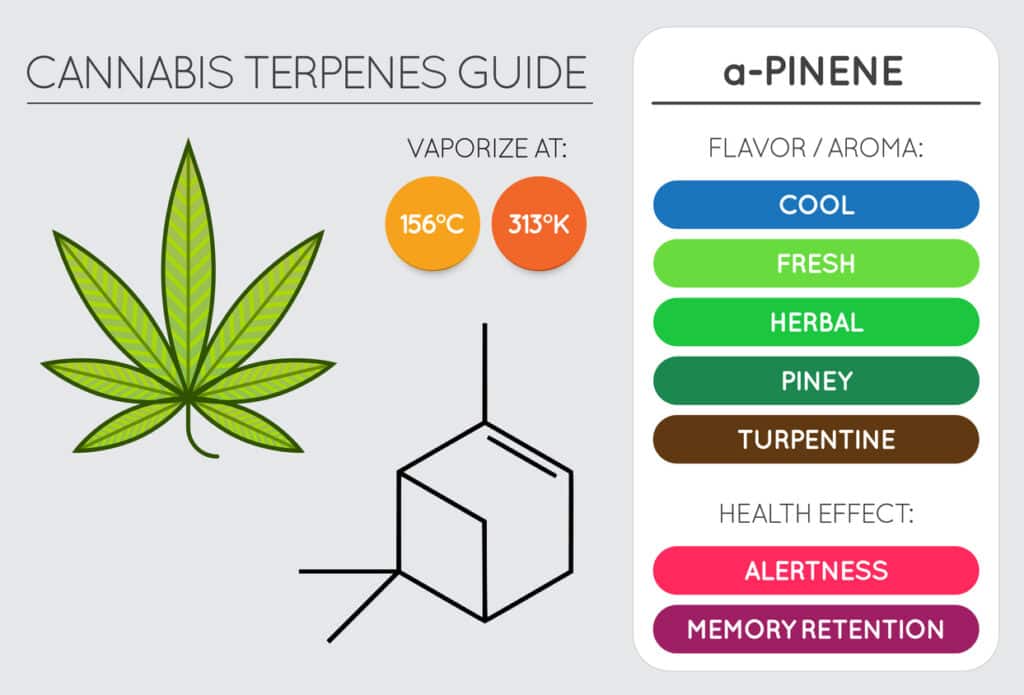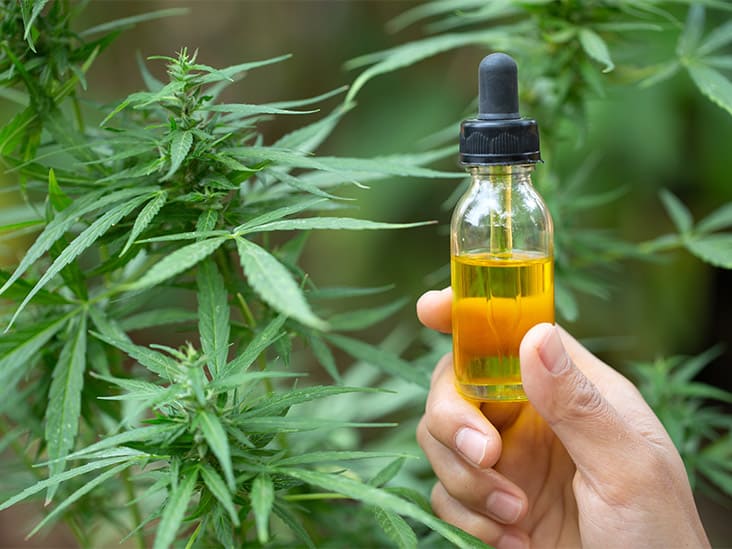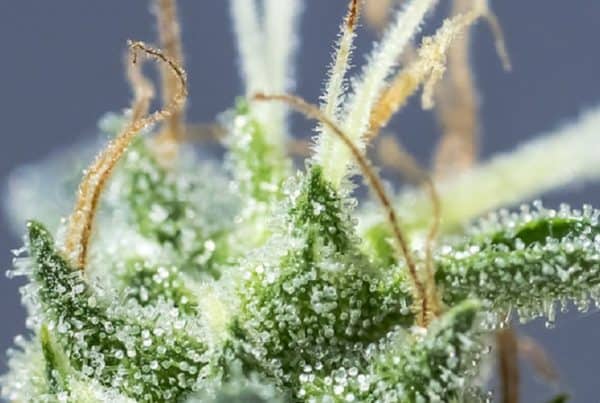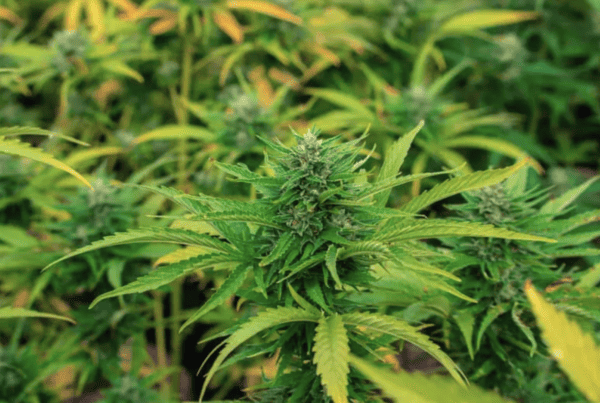TABLE OF CONTENTS
Terpene blends are fast becoming a buzz word in the cannabis scene, but what are terpene blends?
As the name suggests, they are a mixture of terpenes that have been blended together to achieve a particular benefit or effect. There is a lot that goes into creating a terpene blend; it is more than merely mixing terpenes together.
Terpene blends become popular after the synergistic effects of cannabis were identified and elaborated. Terpenes in cannabis not only provide the distinct aroma and taste but they also offer significant therapeutic benefits especially when they are working with other compounds in cannabis.
There are over 200 different terpenes that are present in cannabis. They have different biochemical make up and will produce different scents as well as exert different therapeutic benefits. When combined some terpenes will complement the effects of other terpenes through cannabis synergy.
Manufacturers in the cannabis space are experimenting with different blends of terpenes to create varied desirable effects.
For example, ACDC's terpene blend contains 8-15 terpene isolates―myrcene, caryophyllene, humulene, limonene, linalool, pinene, terpinolene, and valencene―giving it an earthy, sweet, and skunky profile. The company also sells a terpene diluent to control product viscosity without altering the flavor of the terpene blend.
What Are Terpene Blends & How Are Terpene Blends Made?
Quality terpene blends are made from terpenes that have been botanically sourced and molecularly refined to achieve the highest purity levels.
Terpenes may be sourced from cannabis or other natural plants such as lavender oil, which contains linalool, and citrus fruits, which contain limonene. The manufacturers will obtain analytical data with terpene profiles from various cannabis strains.
For example, they can obtain the terpene profile of Jack Herer, which contains terpenes such as terpinolene, caryophyllene, limonene, bisabolol, ocimeme, humulene, pinene, fenchol, cineol, and terpineol.
They will then develop formulations to mimic the terpene profiles of popular strains of cannabis that have desirable effects. The manufacturers will try to recreate the same taste and effect that is offered by the plant.
Most manufacturers will target a concentration of up to 20% of terpene while the natural cannabis plant has 2-5% terpenes. If the terpenes aren't blended well, the taste may become bitter and may sting or burn the lips and tongue. Here is more on what are terpene blends.
The Problem With Cannabis-Derived Terpenes
Why create terpene blends to mimic the terpene profiles of popular cannabis strains?
Cannabis derived terpenes are the holy grail of all types of terpenes. However, it may not be possible to extract all the terpenes that are present in a strain of cannabis. Most times only a quarter or one third of the terpenes can be extracted.
Additionally it is extremely expensive to extract terpenes naturally from the cannabis plant. It would cost about $200- $400 per gram if they were extracted directly from cannabis plants. Lastly, it can be very difficult to get consistent results when extracting terpenes directly from cannabis.
Just like one orange taste differently from another orange, one cannabis plant will vary from the nest even if the strain is the same. This creates a potential problem for manufacturers who are required to reproduce identical products in the form of terpene blends.
To circumvent this challenge manufacturers have to adapt a system that will guarantee consistency. This is achieved by handcrafting them.
This means replicating the terpene profile of a cannabis strain and using the same concentrations at all time. The same amount of myrcene or limonene that is used in one blend should be replicated in the next product.
Additionally, the qualities of the terpene at a particular temperature where maximum therapeutic benefits are observed should be replicated in the next product.
Keep in mind that the terpene blend will be subjected to higher temperatures. It should elicit the desired aroma and experience at that given temperature. Manufacturers should take all these factors into consideration when creating these.
Synthetic terpene blends may help to achieve consistency in terpene blends. However, since they are made using synthetic chemical ingredients they are not recommended.
Full Spectrum Terpene Blends
Full spectrum terpene blends contain a host of terpenes, nearly the entire cannabis terpene profile with 120-200 terpenes. They are costly to produce since they contain about five times more terpenes than the usual terpene blends. However, they are still cheaper than cannabis derived terpenes and offer greater consistency.
Therapeutic Terpene Blends
These are terpene blends that have been crafted with a particular therapeutic effect in mind. Complimentary terpenes are combined based on the knowledge of their physiological effects. This creates room to control and amplify the desired therapeutic effect of a cannabis product through the entourage effect.
The terpenes are individually isolated and recombined in suitable ratios to produce a desired therapeutic effect.
Terpene blends are gaining momentum in the cannabis space. They provide a unique opportunity to maximize on the properties and benefits of terpenes while avoiding any negative adverse effects.
They also offer a cost-effective way to ensure consistency in replicating different terpene blends. Terpene blends will pave way for the emergence of customized cannabis medicine.
Terpene Blends: A Guide to the Symphony of Nature
Consumers and industry experts have recently become interested in terpenes because of its potential therapeutic and aromatic benefits. Terpenes are the aromatic chemicals that give many plants their distinctive fragrances and flavors. But there is growing interest in terpene mixes rather than just concentrating on certain terpenes. Let's explore these mixtures and find out what makes them so popular.

Terpenes: An Overview
It's important to understand what terpenes are before talking about blends. Organic substances called terpenes are present in a wide variety of plants. Among many others, they offer the distinctive aroma of pine trees, the energizing aroma of citrus fruits, and the tranquil sensation of lavender.
Terpenes are very famous in the cannabis market. Terpene profiles that are particular to each cannabis strain help to create their distinctive scents and maybe beneficial effects.
How Do Terpene Blends Work?
Terpene blends are exactly what they sound like: a combination of several terpenes blended in a certain proportion. These mixtures may include:
Natural: Extracted from plants in the proportions found in nature.
Customized: Made by producers to produce a certain scent or result.
Why Mix Terpenes?
Blending terpenes has various benefits, including:
Entourage Effect: Just as in the world of cannabis, where cannabinoids and terpenes are thought to function better together than in isolation, mixing various terpenes may result in synergistic benefits. According to this theory, the total impact of the terpenes is larger than the sum of each one's individual impacts.
Customization: Blending enables the formation of certain scents or flavor profiles, which allows for the customization of the sensory experience to suit consumer preferences.
Targeted effects: Producers can create products that target particular therapeutic outcomes, such relaxation, focus, or energy, by combining terpenes known for distinct effects.
Targeted Benefits: By combining terpenes with well-known advantages, producers can create products that target particular therapeutic effects, including relaxation, focus, or vigor.
Favorite Terpene Blends
Despite the practically limitless options, these are some common blends:
Terpenes with relaxing properties, like as linalool (also present in lavender) and myrcene, are frequently used in relaxation blends.
Blends that are uplifting may contain limonene, which is frequently found in citrus fruits, and pinene, which is typically found in pine trees, in an effort to perhaps improve mood and boost alertness.
Focus Blends: These might include terpenes like alpha-pinene, which some research claims may help with memory recall.
“
There are over 300,000 jobs in the cannabis industry. CTU trained me for one of them!

Makes $24.50 @ THC +
Considerations and Safety Of Terpene Blends
When employing terpene mixes, it's important to understand the following as with any compound:
Purity: Make sure the blend is of excellent quality and devoid of impurities.
Focus: Because terpenes are powerful, they should always be used responsibly.
Terpenes may have interactions with drugs or other substances. It is advised to speak with a healthcare provider before using.
Conclusion on Terpene Blends
Terpene blends provide an intriguing way to take use of the many advantages that these aromatic compounds have to offer.
The tremendous potential of nature's aromatic toolset can be unlocked by consumers and manufacturers alike via knowledge and experimentation with various combinations.
Enroll in Cannabis Training University's online cannabis certifications programs to learn the science behind how terpenes work synergistically with cannabinoids to create more profound healing.

Fred Hernandez
Fred Hernandez is a highly accomplished and versatile writer, boasting an extensive background in the cannabis industry. With an in-depth understanding of various sectors including cultivators, processors, retailers, and brands, Fred's expertise spans across the entire cannabis landscape. As a prominent contributor to CTU, he consistently delivers insightful articles exploring the latest developments, news, and regulations shaping the cannabis industry. Whether it's delving into the intricacies of cannabis products, cannabis strain reviews, or providing comprehensive analyses of cannabis laws, or sharing expert insights on cannabis cultivation techniques, Fred's wealth of knowledge positions him as an invaluable writer and educator for all cannabis-related subjects.












 Jeff was involved in an accident where he endured a traumatic brain injury. He had a week-long stay in ICU where brain surgeons
Jeff was involved in an accident where he endured a traumatic brain injury. He had a week-long stay in ICU where brain surgeons  100% risk free money back guarantee within 48 hours after purchase if student has not completed any of the courses or exams.
100% risk free money back guarantee within 48 hours after purchase if student has not completed any of the courses or exams.